Tag Homebrewing
Blackberry Prison Juice Cider
Recipe: Dry Cider. Fermentables: Blackerries, SunRype Apple Juice. Yeast: SafCider AB-1. BJCP Style: C1A. Common Cider.
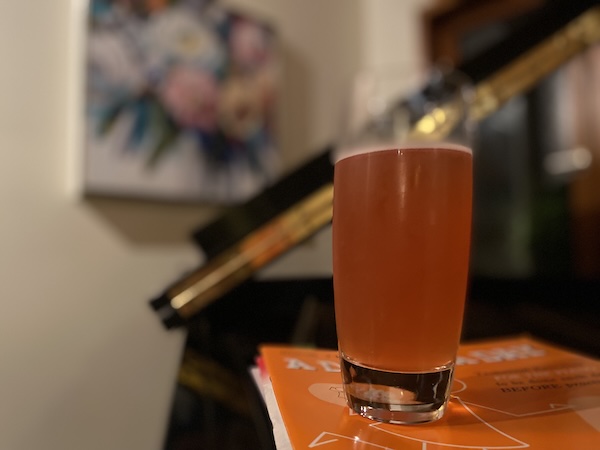 This is a fancy version of my prison juice cider recipe. With blackberries in season, I decided to experiment using fruit puree in this cider with fresh berries. The colour did not disappoint: perfectly pink with a purple hue. As it aged the colour took on more orange. Unfortunately, the blackberries don’t feature prominently in the taste. But it did offer a bit more depth of flavour than store bought apple juice provides and is a fun regional and seasonal variation to an otherwise boring recipe.
This is a fancy version of my prison juice cider recipe. With blackberries in season, I decided to experiment using fruit puree in this cider with fresh berries. The colour did not disappoint: perfectly pink with a purple hue. As it aged the colour took on more orange. Unfortunately, the blackberries don’t feature prominently in the taste. But it did offer a bit more depth of flavour than store bought apple juice provides and is a fun regional and seasonal variation to an otherwise boring recipe.
Britannia Mine Mill #2 - Canadian IPA
Recipe: Canadian IPA. Malts: Maris Otter, Munich, Black. Hops: Columbus (1oz), Fuggles (1oz), Goldings (1oz), and Willamette (3oz). Yeast: Imperial House. BJCP Style: 12C. English IPA.
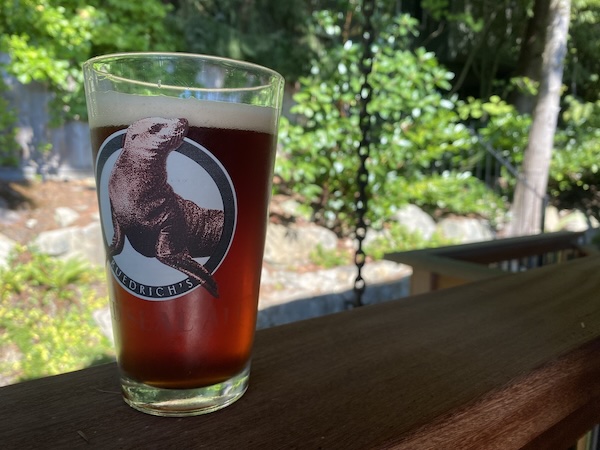 Britannia Mill #1 was built before the Britannia Mining and Smelting Compnay had a thorough understanding of how to efficiently process ore. It was also missing equipment required for efficient copper extraction. Fittingly my first attempt at this beer was brewed with an inappropriate yeast for an english ipa. At the time, Foggy London Ale from Escarpment was the only thing available to me and in a rare state of optimism I carried forth with a false hope that I could re-create Shotover Scholar with a NEIPA yeast strain.
Britannia Mill #1 was built before the Britannia Mining and Smelting Compnay had a thorough understanding of how to efficiently process ore. It was also missing equipment required for efficient copper extraction. Fittingly my first attempt at this beer was brewed with an inappropriate yeast for an english ipa. At the time, Foggy London Ale from Escarpment was the only thing available to me and in a rare state of optimism I carried forth with a false hope that I could re-create Shotover Scholar with a NEIPA yeast strain.
Pinus Ananus Comosus IPA
Recipe: Cold IPA. Malts: Canadian Pilsner, Flaked Corn, Carapils. Hops: Columbus (0.5oz), Sabro (4oz), Cryo-pop (2oz). Yeast: Imperial L17. BJCP Style: 21B. Specialty IPA.
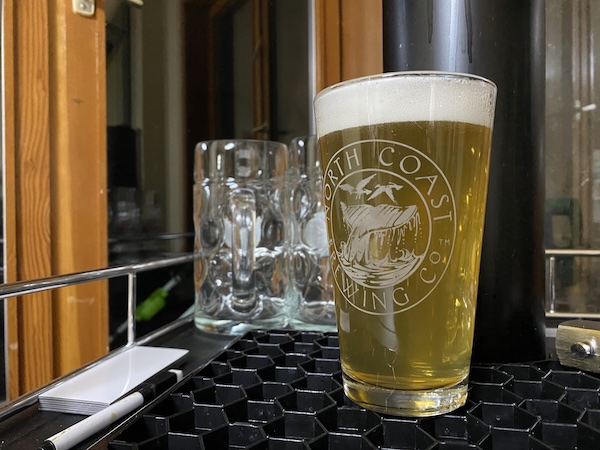 I’m not big on IPAs, especially the newer style IPAs that resemble pulped orange juice. Cold IPA, however, is a fantastic expression of the style: American pilsner and adjunct malts fermented with clean lager yeasts, combining to make a super clean canvas to let hops fully express themselves. I cooled and racked this beer directly onto an Imperial L17 harvest yeast cake that fermented my previous helles lager. At 64C it took no time at all to ferment. My planning for this beer wasn’t phenomenal, but the end result was a wonderfully drinkable 6% IPA with a strong dank and pine/cedar hop aroma that leads to a pine and pineapple finish.
I’m not big on IPAs, especially the newer style IPAs that resemble pulped orange juice. Cold IPA, however, is a fantastic expression of the style: American pilsner and adjunct malts fermented with clean lager yeasts, combining to make a super clean canvas to let hops fully express themselves. I cooled and racked this beer directly onto an Imperial L17 harvest yeast cake that fermented my previous helles lager. At 64C it took no time at all to ferment. My planning for this beer wasn’t phenomenal, but the end result was a wonderfully drinkable 6% IPA with a strong dank and pine/cedar hop aroma that leads to a pine and pineapple finish.
Gemütlichkeit Helles
Recipe: Munich Helles Lager. Malts: German Pilsner, Munich, Carapils. Hops: Hallertau (1.5oz). Yeast: Imperial L17. BJCP Style: 4A. Munich Helles.
 I forgot how much I love lagers. Like an idiot it’s been close to a year since I’ve made my last one. As penance I brewed a classic Munich Helles, and a super simple one at that. I love this style: nice malty flavours, perfume-y nose, and just enough bitterness to make me want to drink five. This particular beer was supposed to come in around 1.047 to ensure an abv of more than 5%, however I completely forgot that I only get around 70% efficiency with pilsner malt. No matter though as the yeast fermented the wort down to 1.008 and I still hit my 5%. The finished beer reminds of Budweiser, in a good way, with more German character.
I forgot how much I love lagers. Like an idiot it’s been close to a year since I’ve made my last one. As penance I brewed a classic Munich Helles, and a super simple one at that. I love this style: nice malty flavours, perfume-y nose, and just enough bitterness to make me want to drink five. This particular beer was supposed to come in around 1.047 to ensure an abv of more than 5%, however I completely forgot that I only get around 70% efficiency with pilsner malt. No matter though as the yeast fermented the wort down to 1.008 and I still hit my 5%. The finished beer reminds of Budweiser, in a good way, with more German character.
AvgBrü American Amber Ale
Recipe: American Amber Ale. Malts: Marris Otter, Munich, Crystal 60L, Chocolate. Hops: Columbus, Amarillo (2oz) and Centennial (2oz). Yeast: Imperial Kaiser. BJCP Style: 19A. American Amber Ale.
 This quarter’s AvgBrü recipe from the Brulosophy homebrew club intrigued me: an American Amber Ale. I haven’t even seen an amber ale in over a decade, let alone brewed one. It’s been so long in fact that it feels like a new style. The recipe guidelines called for a mix of American or British malts, British yeast, and traditional American hops including amarillo, centennial, and cascade. I came up with the below recipe and fit the hop schedule to a process that works best on my Grainfather setup.
This quarter’s AvgBrü recipe from the Brulosophy homebrew club intrigued me: an American Amber Ale. I haven’t even seen an amber ale in over a decade, let alone brewed one. It’s been so long in fact that it feels like a new style. The recipe guidelines called for a mix of American or British malts, British yeast, and traditional American hops including amarillo, centennial, and cascade. I came up with the below recipe and fit the hop schedule to a process that works best on my Grainfather setup.
Britannia Mine Mill #1 - Canadian IPA
Recipe: Canadian IPA. Malts: Maris Otter, Carastan, Carapils. Hops: Fuggles (4oz), Goldings (2oz), and Willamette (2oz). Yeast: Foggy London Ale. BJCP Style: 12C. English IPA.
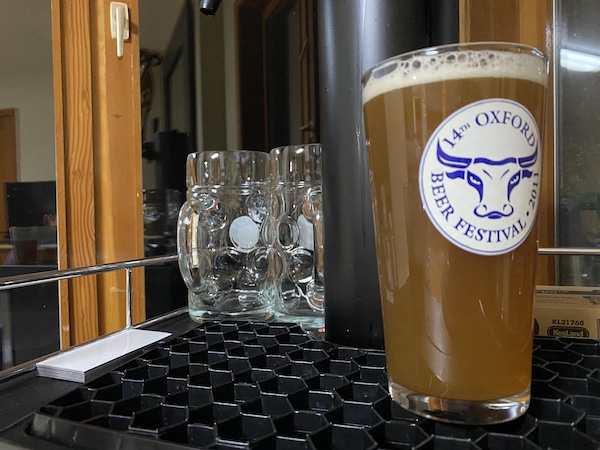 I chaperoned my daughter’s 5th grade field trip to the Britannia Mine museum recently. The entire time I couldn’t help but wonder what all these guys drank after a shift or on weekends. What types of beer did they have access to? What types of beer were even popular at the time? Unfortunately beer drinking didn’t feature prominently in the exhibits, so I’m left to making broad assumptions based on research. According to a Beer Advocate article, at the turn of the 20th century IPA accounted for 74 percent of the beer being produced in Canada. Digging deep into the characteristics of these beers would be fun but time consuming and I’ll save for a later date. For the time being I feel like brewing something relatively to style, that I want to drink, and that captures the feeling of cracking open 3 or 4 much needed IPAs after finishing a long-ass day in a mine.
I chaperoned my daughter’s 5th grade field trip to the Britannia Mine museum recently. The entire time I couldn’t help but wonder what all these guys drank after a shift or on weekends. What types of beer did they have access to? What types of beer were even popular at the time? Unfortunately beer drinking didn’t feature prominently in the exhibits, so I’m left to making broad assumptions based on research. According to a Beer Advocate article, at the turn of the 20th century IPA accounted for 74 percent of the beer being produced in Canada. Digging deep into the characteristics of these beers would be fun but time consuming and I’ll save for a later date. For the time being I feel like brewing something relatively to style, that I want to drink, and that captures the feeling of cracking open 3 or 4 much needed IPAs after finishing a long-ass day in a mine.
Knockoff Oatmeal Breakfast Stout
Recipe: Oatmeal Stout with Coffee and Cocao. Malts: Pale malt (2-row), Roasted barley, Chocolate malt, Carafa Special II. Hops: Columbus (0.5oz), Willamette (1oz). Yeast: Imperial Kaiser. BJCP Style: 16B. Oatmeal Stout.
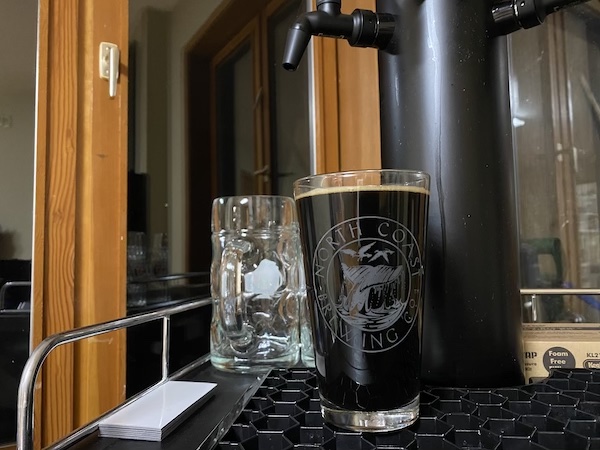 This oatmeal stout is inspired by some of the Founders Kentucky Breakfast Stout recipes out there. Despite that, this is not a KBS clone recipe, and isn’t really meant to be. I wanted this beer to be smaller in alcohol and have a nice coffee/chocolate balance. Unfortunately the coffee overpowers any chocolate notes from the cacao nibs. While still a good beer it lacks nuance and complexity that a winter warmer like this should have. In the next iteration I intend to find those flavour complexities with increased alcohol, bourbon, and oak.
This oatmeal stout is inspired by some of the Founders Kentucky Breakfast Stout recipes out there. Despite that, this is not a KBS clone recipe, and isn’t really meant to be. I wanted this beer to be smaller in alcohol and have a nice coffee/chocolate balance. Unfortunately the coffee overpowers any chocolate notes from the cacao nibs. While still a good beer it lacks nuance and complexity that a winter warmer like this should have. In the next iteration I intend to find those flavour complexities with increased alcohol, bourbon, and oak.
The BruSho Altbier
Recipe: German Altbier. Malts: Pilsner, Munich, Carapils, Maramunich III, Carafa I. Hops: Saaz, Czech (3oz) and Hersbrucker (0.75oz). Yeast: Imperial Kaiser. BJCP Style: 2B. Altbier.
 I stole this recipe from a recent BruSho episode. I was a little reluctant to brew it since commercially I haven’t found many examples of an altbier I liked. This particular recipe is solid though and makes a perfect fall or winter style beer. I fermented with Kaiser at 70F which is 10F warmer than recommended, and it definitely threw some esters. Because of that, the beer is less cleanly lager-like and something between an altbier and an english brown ale. Despite that I prefer this beer to other english brown ales and brown porters I’ve done in the past and I now have a couple of ideas to make those beers better. As for this beer, I’ll probably make changes to better suite my palate, which is to say cleaner with less caramel.
I stole this recipe from a recent BruSho episode. I was a little reluctant to brew it since commercially I haven’t found many examples of an altbier I liked. This particular recipe is solid though and makes a perfect fall or winter style beer. I fermented with Kaiser at 70F which is 10F warmer than recommended, and it definitely threw some esters. Because of that, the beer is less cleanly lager-like and something between an altbier and an english brown ale. Despite that I prefer this beer to other english brown ales and brown porters I’ve done in the past and I now have a couple of ideas to make those beers better. As for this beer, I’ll probably make changes to better suite my palate, which is to say cleaner with less caramel.
Prison Juice Cider
Recipe: Dry Cider. Fermentables: SunRype Apple Juice. Yeast: SafCider. BJCP Style: C1A. Common Cider.
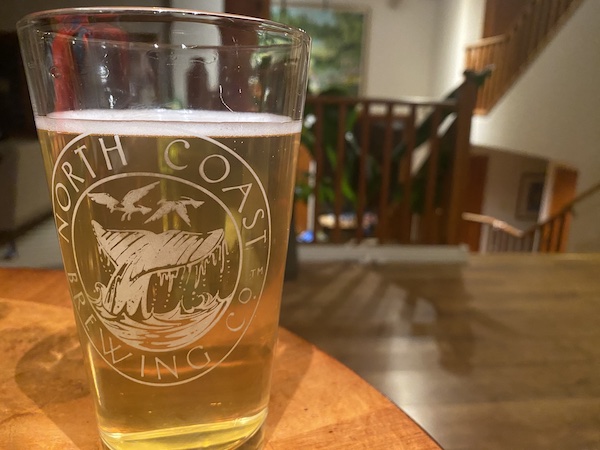 This was my introduction to brewing ciders and this recipe is basically prison juice. SunRype apple juice, yeast, and nutrient: that’s it. My brew day took about 15 minutes. It was so short I almost felt guilty. Despite the simplicity, the product is super drinkable and my wife seems to like it. It also makes for an interesting canvas to play with fruit and other additives. I’d like to make it a regular brew and keep playing with different fruit, hop, and spice flavors.
This was my introduction to brewing ciders and this recipe is basically prison juice. SunRype apple juice, yeast, and nutrient: that’s it. My brew day took about 15 minutes. It was so short I almost felt guilty. Despite the simplicity, the product is super drinkable and my wife seems to like it. It also makes for an interesting canvas to play with fruit and other additives. I’d like to make it a regular brew and keep playing with different fruit, hop, and spice flavors.
Ale Tales - Cold IPA Recipe
Cold IPA. Malts: Canadian Pilsner, Canadian 2-row, flaked corn, carapils. Hops: Northern Brewer (1oz), Mosaic (2oz), Citra (2oz) and Nelson Sauvin (2oz). Yeast: LalBrew Novalager. Fruity and citrusy clean lager.
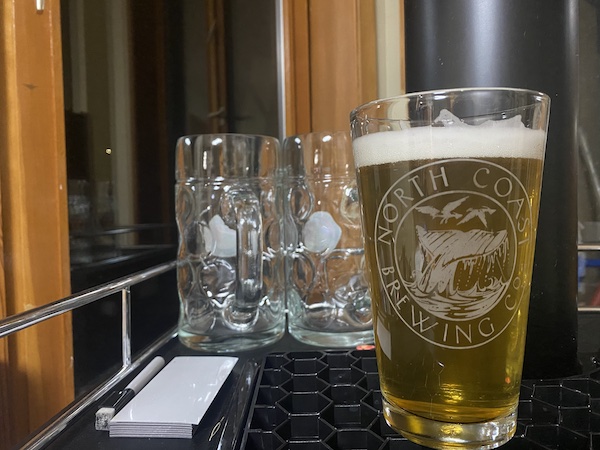 Iterating on my dry-hopped cream ale, I evolved the style into its more alcoholic and hoppy successor, the Cold IPA. The malt bill was recycled, increasing total grain 2 kg and upping the alcohol a percentage point. For a clean fruity and citrusy west coast ipa I went with Mosaic, Citra, and Nelson hops. 1 oz each of Mosaic and Nelson were added to a 20 minute 80C whirlpool. At the very end of fermentation, 1 oz each of mosaic, citra, and nelson were added to the fermentor for 5 days. Water was left largely untouched which was a mistake for an IPA. (see notes) The end beer was mostly what I was shooting for: a juicy, clear, and fruity IPA that showcases some interesting hops but isn’t so big or hoppy that I can’t drink more than one.
Iterating on my dry-hopped cream ale, I evolved the style into its more alcoholic and hoppy successor, the Cold IPA. The malt bill was recycled, increasing total grain 2 kg and upping the alcohol a percentage point. For a clean fruity and citrusy west coast ipa I went with Mosaic, Citra, and Nelson hops. 1 oz each of Mosaic and Nelson were added to a 20 minute 80C whirlpool. At the very end of fermentation, 1 oz each of mosaic, citra, and nelson were added to the fermentor for 5 days. Water was left largely untouched which was a mistake for an IPA. (see notes) The end beer was mostly what I was shooting for: a juicy, clear, and fruity IPA that showcases some interesting hops but isn’t so big or hoppy that I can’t drink more than one.